Last week, I gave you the first and most important step to understanding your skein of hand-dyed yarn: opening it up. And because we’re constantly twisting and untwisting skeins here in the studio, it seems like a really simple step to me, but I know from our experiences at yarn festivals and trunk shows that it is something a lot of people are reluctant to do. But when it comes to hand-dyed yarn, there’s simply no better way to really understand what you’re going to be knitting or crocheting with than opening it up and having a good look.
So now, with that first step taken, what are you looking for? What’s the magic inside the skein that will tell you how the colourway will behave? There are several things to look for and today I’m going to cover the most important: the length of the colour repeats.
What are Colour Repeats?
Because hand-dyed yarn is usually dyed in the skein with the yarn looping around in circle, the colour we apply to each area of the skein hits all (or at least several) of the strands at that point in the circle. When you are knitting or crocheting with it, the colours will repeat as you work your way around the circle again and again. Each change of colour is refered to as a colour repeat, and its the length of these repeats that are so important to understanding how a hand-dyed colourway will behave.
Bonus info: the exception to this is single-skein gradients. These are dyed using a different technique that makes the colour change slowly from one end of the skein to another. So while the colours don’t repeat the way they do in most hand-dyed yarns, the colour changes are still referred to as colour repeats.
What about Semi-Solid Colourways?
For the most part, colour repeats apply to variegated and tonal yarns more than semi-solids, because they contain multiple colours that play off each other. But where this does apply to semi-solid skeins is in the variation of the depth of shade — the yarn will have taken the colour more intensely in some sections of the loop than in others. Think of those as colour repeats and you’ll get a better understanding of your semi-solid too. (Need a refresher on semi-solids vs solids? Click here)
There are several types of colour repeats that you’re looking for: long repeats, short repeats, and pops of colour. So open up your skein of hand-dyed yarn, lay it out so you can view the whole loop, and let’s see what we’ve got!
Long Repeats
There’s no objective measure of what qualifies as a long repeat, but I’d say anything that is a third of the loop or longer counts. Long repeats often stretch to one whole side of the skein (so, covering half the yarn) or sometimes even as much as three-quarters or more. A skein can have a single long repeat of just one colour, or it may have several colours that each are long repeats, and those can also be intermixed with short repeats as well. Take a look at this skein in our colourway “Flow“. Though it has some shorter splotches of colour, the underlying green section is a very long repeat — stretching to well over half the skein.
The longer the repeat, the more it will stretch out in your knitting, forming a long line of colour. Depending on the diameter of the item you’re making, that could begin to look like stripes, either where the colour stacks row on row, or where it pools more on one side than the other. This shrug below is a great example.
But here’s something interesting — do you see how the “striping” seems to disappear in the lace panel running down the center? Where plain stitches like stockinette allow longer repeats to stretch out, patterns that contain more complicated stitches such as yarn overs and slipped stitches break up those longer colours and can help to even them out.
Crochet does very different things with variegated yarns and their colour repeats, because crochet moves the yarn both vertically as well as horizontally. So it won’t necessarily stretch the colour out the way knitting can but, regardless, the longer the repeat, the larger that section of colour will be within the stitch pattern.
Short Repeats
Again, there’s no one measure of what qualifies as a short repeat, but I’d call any colour section that stretches for less than a quarter of a skein’s loop as a short repeat. Sometimes those smaller sections appear evenly across the whole skein, as in our colourway “Blood Moon“, and sometimes they appear only here and there, like the green in “Vortex“. Sometimes they blend gently into the next colour, and sometimes they have clearer edges.
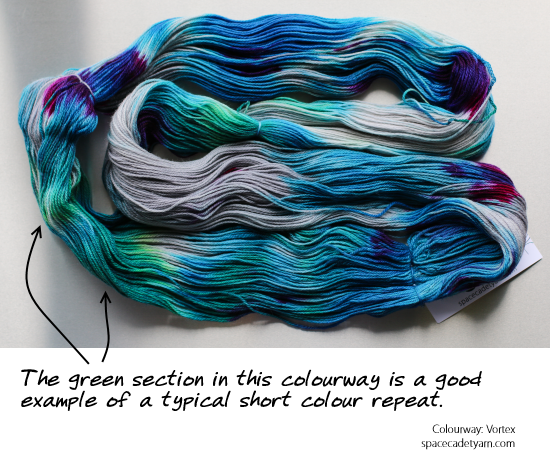
Pops of Colour
When you have really little sections of colour in a skein, these are what I think of as “pops”. In truth, they’re just short colour repeats like the ones above, but they’re much much smaller, meaning the colour won’t last more than a few stitches when you work it up. Whether they’re in a contrasting colour or a coordinating shade, the effect can be spectacular.
Scroll back up to the picture of our colourway “Vortex” and check out the little sections of magenta — those are a great example of a pop of colour. Or look at the quick splashes of black in “Tantrum” below. Colour pops like these can make your stitches super-interesting and your final project really eye-catching.
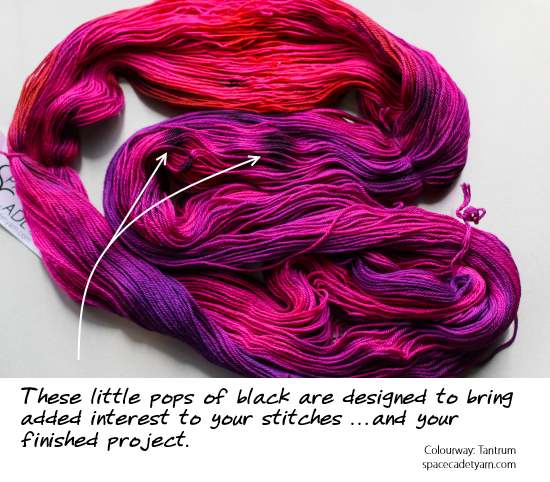
Now it’s your turn! Go grab a skein from your stash, open it up, and look at the repeats. Does it have a few predominant shades that span most of the skein? Or are there lots of short bursts of colour? Do you see little pops? Being able to look at your skein and identify the colour repeats is such a help to understanding how the colourway will work in your knitting and crocheting! Whether they a long repeats, short repeats, pops of colour, or a combination of all three, each hand-dyed skein is unique and the only way to understand it is… to open it up and see what you’ve got!

If you found this post useful, you’ll want to get on our mailing list. Each week(ish) we send out a newsletter packed with all the latest that’s happening in the world of yarn, plus pattern picks, our pop-quiz, and more! And, when you join the list, you…
Get Our FREE eBook with Great Tips & Hacks from the Top Indie Designers!
The InterStellar Yarn Alliance Opens on Tuesday Sept 6!
Want to come with SpaceCadet on a colour adventure? That’s exactly what the InterStellar Yarn Alliance is all about!
Join our premier yarn club to come with us as we explore the furthest reaches of colour — in gorgeous yarns dyed in exclusive colours that you can’t get enough of, and shared with a wonderful community of fellow club members who are all part of the adventure too. Plus beautiful coordinating skeins, our awesome club gifts, and a 15% coupon.
BUT WAIT — THERE’S MORE!!! We always give first dibs to the folks on the club mailing list, so if you want the chance to grab a spot before anyone else, just click here and get on the club mailing list!

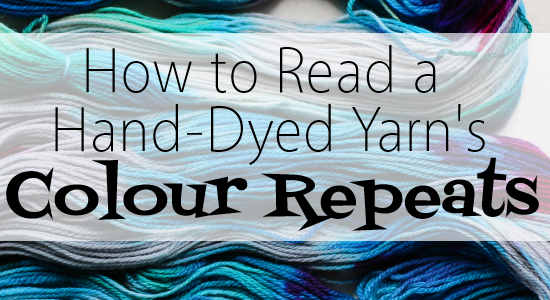
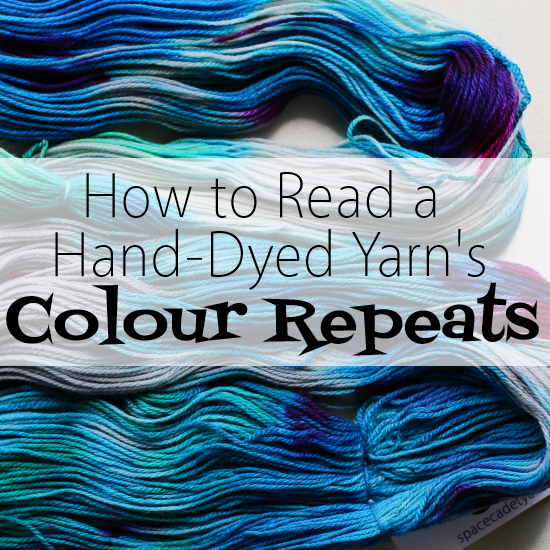
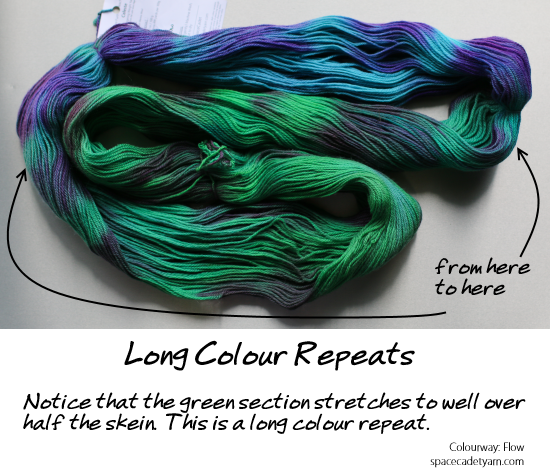
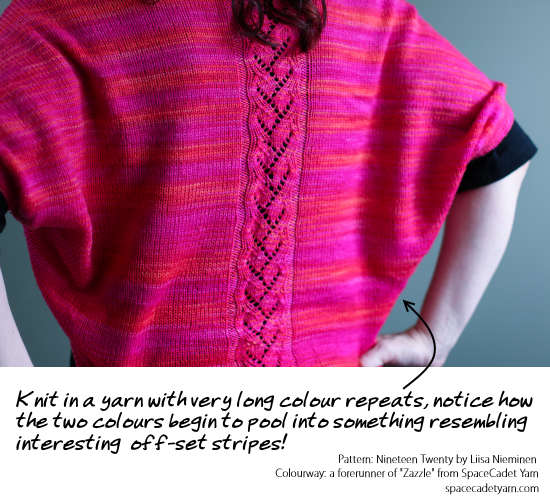
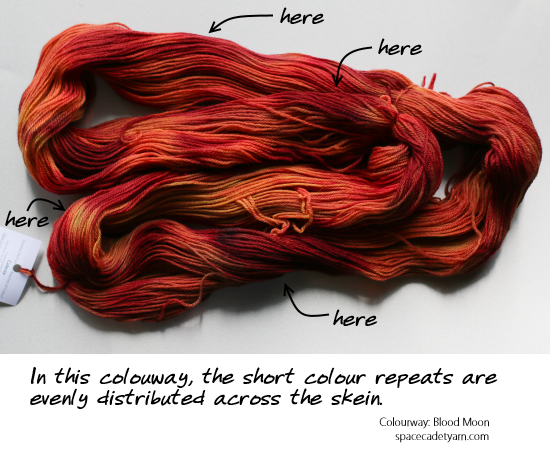
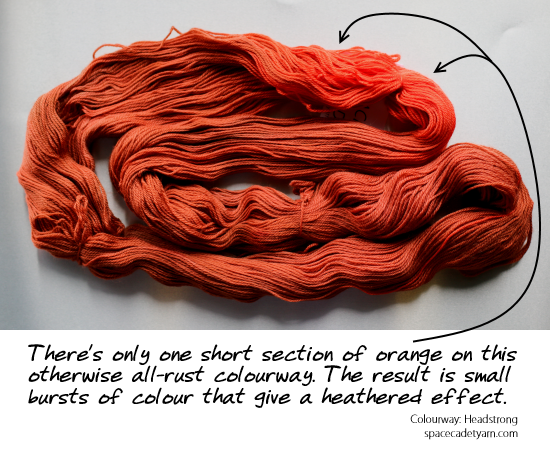

Isn’t there another name fir color repeats in hand dyed yarn.?